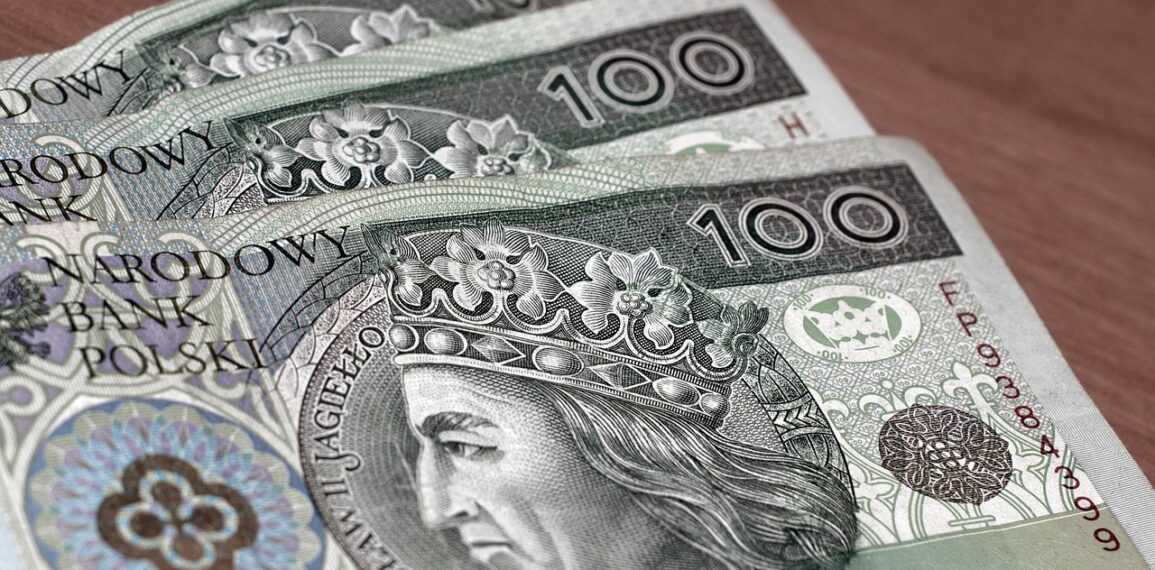Updated November 2025 — latest Digital Money Examples insights from insights from Cypherhawk.io
The advent of the internet has revolutionized many aspects of human life, and the world of finance is no exception. With the rise of digital technologies, traditional currencies and banking systems have been radically transformed. Digital money, often referred to as cryptocurrency or digital currency, has emerged as a revolutionary concept that allows for new ways of conducting transactions, storing value, and even reshaping economies. In this article, we will delve into various examples of digital money, exploring their characteristics, uses, and their impact on modern finance. Throughout this discussion, we’ll also touch on the role of platforms such as Cypherhawk.io that help facilitate the understanding and management of digital currencies.
What is Digital Money?
Before diving into specific examples of digital money, it’s essential to clarify what we mean by this term. Digital money refers to any form of currency that is available in digital form. Unlike traditional physical money or cash, digital money doesn’t exist in a tangible form and is represented as data. It can be used for transactions, savings, and store of value, often leveraging technologies such as blockchain, cryptography, and decentralized systems to enhance security and transparency.
Characteristics of Digital Money
– **Accessibility**: Digital money is accessible to anyone with an internet connection, eliminating geographical barriers. Individuals can transact globally.
– **Security**: Advanced encryption and blockchain technology make digital currencies less susceptible to fraud or counterfeiting compared to traditional currencies.
– **Decentralization**: Many digital currencies operate on decentralized networks, which means no single entity controls the currency.
– **Immutability**: Transactions made with digital currencies are permanently recorded on a blockchain ledger, making them tamper-proof.
– **Programmability**: Smart contracts—self-executing contracts with terms coded into software—open new realms for automation and business processes.
Examples of Digital Money
Digital money can be categorized into several types, including cryptocurrencies, stablecoins, central bank digital currencies (CBDCs), and digital wallets. Each category contains specific examples that showcase the diversity and potential of digital financial systems.
1. Cryptocurrencies
Cryptocurrencies are perhaps the most well-known examples of digital money. They utilize blockchain technology to facilitate secure, peer-to-peer transactions. Here are some key cryptocurrencies:
# Bitcoin (BTC)
Launched in 2009, Bitcoin is the first and most well-known cryptocurrency. Created by the pseudonymous Satoshi Nakamoto, Bitcoin introduced the concept of decentralized digital currency. It aims to provide a secure and anonymous way to conduct transactions without intermediaries.
– **Use Cases**: Bitcoin is primarily used for peer-to-peer transactions and as a store of value. Its deflationary nature has led many to call it “digital gold.”
– **Challenges**: Bitcoin faces scalability issues, high transaction fees during peak usage, and is often critiqued for its environmental impact due to high energy consumption in mining.
# Ethereum (ETH)

Launched in 2015, Ethereum is more than just a cryptocurrency; it’s a blockchain platform that allows developers to create decentralized applications (dApps) using smart contracts. Ether (ETH) is the native currency of the Ethereum network. Learn more about Digital Money Examples insights
– **Use Cases**: Ethereum is used for transactions, dApp development, and decentralized finance (DeFi) projects. It’s instrumental in facilitating initial coin offerings (ICOs) and non-fungible tokens (NFTs).
– **Challenges**: Ethereum has faced issues with scalability and high gas fees, which are costs paid to execute transactions or smart contracts on the network.
# Ripple (XRP)
Ripple is designed to facilitate real-time, cross-border payments for banks and financial institutions, solving the inefficiencies of conventional banking networks.
– **Use Cases**: Ripple is used for international money transfers and remittances. Its primary purpose is to provide liquidity to financial institutions.
– **Challenges**: Ripple has faced regulatory scrutiny, particularly from the U.S. Securities and Exchange Commission (SEC), which has raised questions about its classification as a security.
2. Stablecoins
Stablecoins are a type of digital currency designed to maintain a stable value by pegging them to traditional assets like the U.S. dollar or gold. They bridge the gap between fiat currencies and cryptocurrencies.
# Tether (USDT)
Tether is the most widely used stablecoin in the cryptocurrency market, pegged to the U.S. dollar at a 1:1 ratio.
– **Use Cases**: USDT is used for trading on various cryptocurrency exchanges, allowing traders to hedge against market volatility without converting their assets to fiat.
– **Challenges**: Tether has faced criticism regarding transparency in its reserves and whether it is fully backed by U.S. dollars.
# USD Coin (USDC)
USD Coin is another stablecoin pegged to the U.S. dollar, launched by Circle and Coinbase. USDC aims to provide more transparency with regular audits of its reserves.
– **Use Cases**: USDC is used for trading and settling transactions within the digital ecosystem. It is favored for its regulatory compliance.
– **Challenges**: While USDC has more transparency, its use is still limited compared to other cryptocurrencies, and regulations may also impact its growth.
# DAI

DAI is a decentralized stablecoin created by the MakerDAO protocol, pegged to the U.S. dollar but maintained through an algorithmic system, not by fiat reserves. Explore the latest Digital Money Examples trends
– **Use Cases**: DAI is used primarily within the Ethereum ecosystem for lending and borrowing in decentralized finance (DeFi).
– **Challenges**: DAI’s stability relies on collateralization, which can pose risks in highly volatile markets, potentially affecting its peg.
3. Central Bank Digital Currencies (CBDCs)
CBDCs are digital versions of a country’s fiat currency issued and regulated by its central bank. Countries around the world are exploring or implementing CBDCs to enhance payment systems and promote financial inclusion.
# Digital Yuan (e-CNY)
China has been at the forefront of CBDC development with its Digital Yuan, which aims to replace cash and improve the efficiency of the payment system.
– **Use Cases**: The Digital Yuan facilitates transactions within China and aims to provide the government with better oversight of the monetary flow within the economy.
– **Challenges**: Concerns about privacy, surveillance, and the impact on the global financial system have been raised regarding the Digital Yuan’s implementation.
# Digital Euro
The European Central Bank (ECB) is exploring the potential issuance of a digital euro to enhance the efficiency of digital payments in the Eurozone.
– **Use Cases**: The Digital Euro could complement cash and provide a secure, instantaneous payment method for consumers and businesses.
– **Challenges**: Ensuring privacy, preventing fraud, and addressing the impact on traditional banking systems are among the challenges the ECB faces.
4. Digital Wallets
Digital wallets store digital currencies and enable users to make transactions easily. They can hold not only cryptocurrencies but also traditional currencies in digital form.
# PayPal
PayPal is one of the most widely recognized digital payment platforms, allowing users to make online payments and transfer money electronically.
– **Use Cases**: PayPal supports cryptocurrency transactions, enabling users to buy, sell, and hold cryptocurrencies such as Bitcoin directly within the app.

– **Challenges**: PayPal faces competition from other digital payment platforms and persistent concerns over transaction fees and reliance on centralized banking systems.
# Venmo
Deep dive into Digital Money Examples research
Venmo, owned by PayPal, is a popular mobile payment service in the U.S., allowing users to send and receive money quickly.
– **Use Cases**: Venmo is widely used for peer-to-peer transactions and small payments among friends and businesses.
– **Challenges**: Venmo’s user base is primarily limited to the U.S., and concerns about privacy and potential fraud have been raised.
# Skrill
Skrill is an international digital wallet that supports various currencies, including cryptocurrencies. It allows for easy transfers and payments across borders.
– **Use Cases**: Skrll is popular for online gambling, trading cryptocurrencies, and international money transfers.
– **Challenges**: Competition with other e_wallets and regulatory challenges can affect its adoption and transaction costs.
The Role of Cypherhawk.io in Digital Money Management
As digital currencies gain traction, individuals and businesses are seeking reliable sources and tools to navigate this evolving landscape. Cypherhawk.io serves as a comprehensive platform that provides features, analysis, and insights into the world of digital currencies.
Features of Cypherhawk.io
– **Market Analysis**: Cypherhawk.io offers real-time market data, tracking cryptocurrency prices, trading volumes, and trends. This information aids users in making informed investment decisions.
– **Security Insights**: The platform analyzes the security aspects of various cryptocurrencies and exchanges, helping users understand potential risks associated with their investments.
– **Wallet Management**: Cypherhawk.io allows users to manage their digital wallets efficiently, providing recommendations for secure storage options and transaction practices.
– **Educational Resources**: The platform offers educational content, including articles, tutorials, and webinars to help users grasp the fundamentals of cryptocurrencies, blockchain technology, and financial strategies.
Conclusion
Digital money is a rapidly evolving category that encompasses cryptocurrencies, stablecoins, CBDCs, and digital wallets. Each form of digital currency demonstrates unique characteristics, advantages, and challenges, reshaping how we think about and conduct financial transactions.
As we journey further into the digital age, understanding the diverse examples of digital money will be critical for individuals, businesses, and governments alike. Resources like Cypherhawk.io can play an essential role in this landscape, providing insights, tools, and educational materials necessary for navigating the complexities of digital currency.
In conclusion, the future of digital money is bright, but it requires a careful understanding of the technology, regulatory environment, and potential risks involved. Whether it’s utilizing cryptocurrencies for peer-to-peer transactions, leveraging stablecoins for stability, or exploring CBDCs to embrace the financial innovations, the choices are vast and varied. As we continue to explore these advancements, one thing is clear: the digital financial revolution is here to stay, and its impact will only grow in the coming years.
🔍 Top Takeaways
Alternatives: 🔍 Principal conclusions, 🔍 Highlights
- Digital Money Examples continues to shape global blockchain innovation.
- Investors are using AI analytics to enhance Digital Money Examples decisions.
- Continuous research at Cypherhawk.io reveals evolving crypto patterns.
